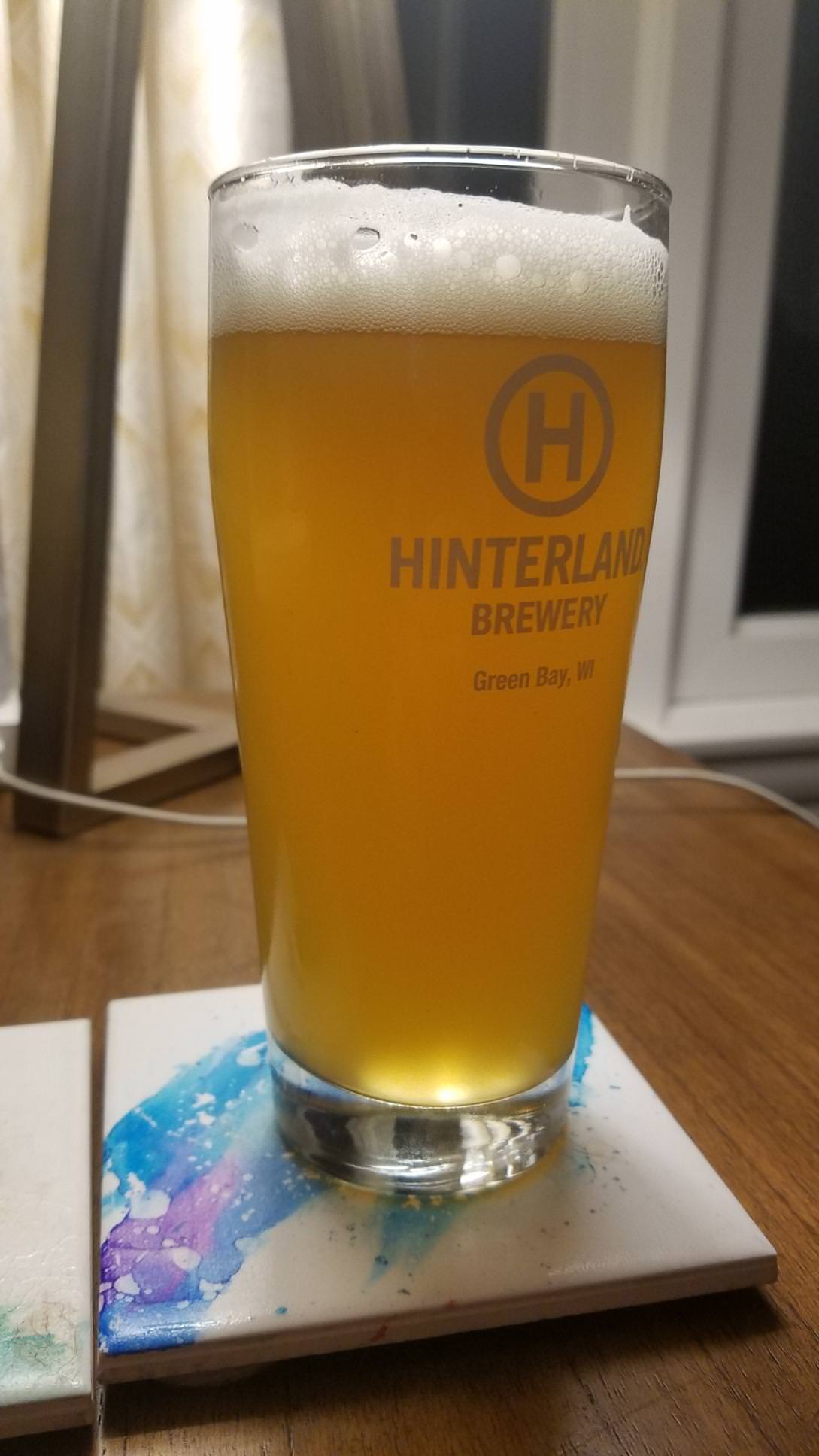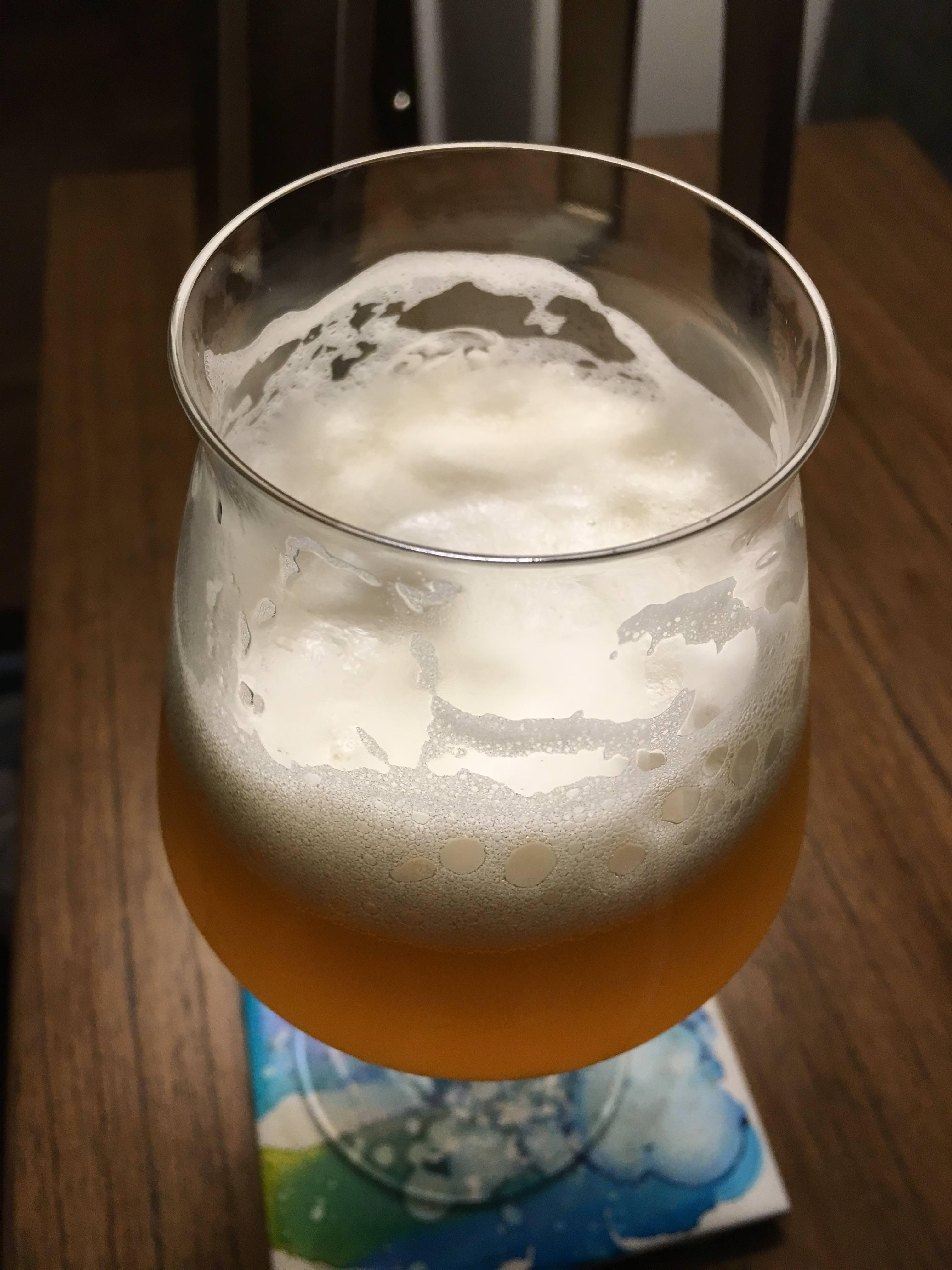Any thoughts on this process?
Other than the temp drop (I’d be afraid of stalling out), this sounds good

Any thoughts on this process?
My only thought is I am anxious to find out your results! FWIW I have used the three yeasts as described by Marshallb and have not had any problems, in fact I like the combination. Definitely easy to use.Has anyone had cans from the brewery lately? Within the last few months I've noticed an increase in the amount of sediment in the cans. My beer glass now has quite a bit of sediment on the bottom that I've never noticed with Tree House before. I don't mind it, just thought it was curious.
ALSO...I plan on brewing on Columbus day.
I want to use a mix of S04:T58 (95%:5%). I'm hesitant to throw WB06 in since it's my first time blending yeasts and I remember most people had a hard time with except maybe @marshallb and his Julius clone on Trinity. Probably will pitch warm (70-72) for 24 hours to get some of the bubblegum from T58 and then cool it to 66 and let it finish. Anyone have luck with this? I've read the thread and there is just so much to comb through it's hard to keep track of what has worked and what hasn't.
In terms of process I want to ferment in a fermonster and then do a closed pressure transfer to a corny rigged with a cut dip tube, filter, and spunding valve. This will contain my dry hop and will occur right at peak krausen or shortly after. I'll let it finish in there at 66 under ~10 psi. Once done I'll do a closed transfer to it with some gyle and conditioning yeast (likely CBC if I can get my hands on this). When I finalize the recipe I'll post it and let y'all know how it comes out. Any thoughts on this process?
Hope this worked for you. I flocc'ed myself doing such a temp drop this past weekend...was late on Saturday night so I pitched a pack of S04 at 72 degrees and set the fermentation chamber for 63...bad idea. No activity 24 hours later. Roused the yeast twice and added some Barbarian dregs I had kicking around and fermentation eventually kicked off Monday morning. Will be adding some T58 and Munich Classic after I raise the temp to 70 or so, tonight or tomorrow morning.Has anyone had cans from the brewery lately? Within the last few months I've noticed an increase in the amount of sediment in the cans. My beer glass now has quite a bit of sediment on the bottom that I've never noticed with Tree House before. I don't mind it, just thought it was curious.
ALSO...I plan on brewing on Columbus day.
I want to use a mix of S04:T58 (95%:5%). I'm hesitant to throw WB06 in since it's my first time blending yeasts and I remember most people had a hard time with except maybe @marshallb and his Julius clone on Trinity. Probably will pitch warm (70-72) for 24 hours to get some of the bubblegum from T58 and then cool it to 66 and let it finish. Anyone have luck with this? I've read the thread and there is just so much to comb through it's hard to keep track of what has worked and what hasn't.
In terms of process I want to ferment in a fermonster and then do a closed pressure transfer to a corny rigged with a cut dip tube, filter, and spunding valve. This will contain my dry hop and will occur right at peak krausen or shortly after. I'll let it finish in there at 66 under ~10 psi. Once done I'll do a closed transfer to it with some gyle and conditioning yeast (likely CBC if I can get my hands on this). When I finalize the recipe I'll post it and let y'all know how it comes out. Any thoughts on this process?
I pitch my yeast combo at 72 then wait until fermentation begins (always less than 24 hrs) then ramp down to 64 and hold for six to eight daysHope this worked for you. I flocc'ed myself doing such a temp drop this past weekend...was late on Saturday night so I pitched a pack of S04 at 72 degrees and set the fermentation chamber for 63...bad idea. No activity 24 hours later. Roused the yeast twice and added some Barbarian dregs I had kicking around and fermentation eventually kicked off Monday morning. Will be adding some T58 and Munich Classic after I raise the temp to 70 or so, tonight or tomorrow morning.


Hey all its been a while. @campfire can you elaborate on this recipe? S-o4 and wb-06 and no clove? Starter for each one? How big a starter and how many gallons wort? Hmm might give this a shot.Long, long time lurker on this thread. Read all 1871 posts, and learned a ton (sincere thanks to all those that contributed). Stumbled upon here while searching for yeast cultivation and mixing.
Unfortunately I can't say that I've drank a TH beer, so I have zero point of reference in this regards however what I was looking achieve was the "bubblegum" aroma and character that the WB-06 could lend without using so much that it turned into a Hefe and overpowered and otherwise great beer. What I ended up going with was 75% S-04, with 25% WB-06, co-pitched, creating a starter for each two days before I brewed (I had brewed the identical recipe previously, using only S-04 and it turned out fantastic). I always create a starter, even for the Dry Yeast varieties - I just feel that it creates a superior beer, not to mention jump starts fermentation - typically within 4-6 hours I'll see activity in the airlock. I pitched the yeast at 80, then dropped the temp down to 74 for 3 days, and brought it down to 68 for the rest of the time in the fermenter. This recipe calls for a dry hopping @ 2 days (while fermentation is still active).
The co-pitched beer turned out exactly as hoped. It was 98% true to the original recipe, however with a faint bubblegum aroma, and a more rounded, soft flavor overall (the previous version could come off a bit citrusy, almost like you were drinking juice). No clove or even banana to speak of - although bubblegum could be construed as banana to some people. You wouldn't really catch the bubblegum unless you were looking for it, however it's present enough to just make it a much more interesting beer. I was very happy with it and will likely keep using this same mix.
Once again, thanks to all that commented here - this board is truly a wealth of knowledge that I personally drink from quite often.
Cheers!
Josh











I haven't had any in a while, but some of the Twitter posts look like starters. Maybe a change in process to speed things up/pay the bills... IDK, pure speculation.Yes, I have noticed a lot of increase sediment in the cans of late.
Has anyone tried Sloop juice bomb yet? Something about it reminds me of TH. Could be the malt or hops..
Wonder what malt and hops they use. Also fwiw, I had a can I bought in the city and it had dyacital.they are near me. fantastic beer. some friends and i did a tasteoff with julius and juice bomb and we all preferred juice bomb. they (Sloop) have lots of other delicious IPAs too
Wonder what malt and hops they use. Also fwiw, I had a can I bought in the city and it had dyacital.
A relatively recent paper looked at the role of two yeast supplements (zinc sulphate (ZnS04) and the amino acid L-leucine) and tested their effects on ester production in beers fermented with the Safale S-04 yeast strain. For reference, Servomyces is a commonly available yeast nutrient that contains zinc and L-leucine is an α-amino acid (α-amino acids are commonly found in commercial yeast nutrients like WLN1000 from White Labs). I reached out to White Labs to find out the exact contents of their yeast nutrient but wasn’t able to get an answer. The paper found that the ester compounds producing during fermentation were greatly increased with the addition of ZnS04 and L-leucine. Specifically, 0.12 g/l of ZnS04 resulted in a 27% increase in acetate esters and 123% increase in total ethyl esters compared to unsupplemented sample. The addition of 0.750 g/l of L-leucine resulted in a 41% increase in total acetate ester concentration and 84% increase in total ethyl ester concentration compared to unsupplemented sample
I've had quite a few IPAs from both Sloop and TH. Sloop has been pretty good as of late, but there's a huge gap between them and TH.Has anyone tried Sloop juice bomb yet? Something about it reminds me of TH. Could be the malt or hops..
...
Dry Hop with 4oz Galaxy, 5oz Nelson
Rest for 5 days between 60 and 62
Crash to 40 for two days (under pressure)
Transfer to keg and lager at 32 for 7 days
Transfer to 2nd keg and Krausen with a Southern Hemisphere Pale Ale fermentation at 1.040.
Leave for a week then slowly cool to serving.
....
They have a custom yeast stain at this point.I was at TH yesterday and saw them finishing up a brew. Only saw two huge Mylar hop bags. I looked everywhere but couldn’t see any yeast, must be behind lock and key. Saw Nate walking around all confused, I should have just tried to ask him what they use.
Hello all,
I apologize if this has been answered (I'm sure it has) but I have a long way to go in reading through this great thread. I harvested the yeast from a can of Green and it grew nicely, but I wanted to ask what the results has been with using harvested Tree House yeast. From what I gather so far, they're using a blend of yeasts, and I'm guessing the ratios won't be right with harvested yeast.
Before I waste a batch, is it worth while to use this harvested yeast? I'm continuing to read this thread, but if someone can point me to a post that addresses this, I'd be very appreciative.
Happy New Year!
Thanks,
John
I can’t tell you for sure what will happen, especially if TH is using new yeast (vague post above stated that but there was no follow up, so?), but if your can of Green is the same as what I worked with and you don’t want to risk a lost batch, I wouldn’t use it.
My recommendation against is based upon the likely presence of CBC-1/F2 a bottle conditioning strain that seemed to inhibit growth of the primary yeast (likely S-04), leaving something very phenolic and Belgian. You can find multiple posts on the internet with similar outcomes.
It’s just beer though, so I’d still try if you’re interested and post the results here!
They have a custom yeast stain at this point.
How do we know they do a bio transformation dry hop charge? Also that they only do one dry hop?